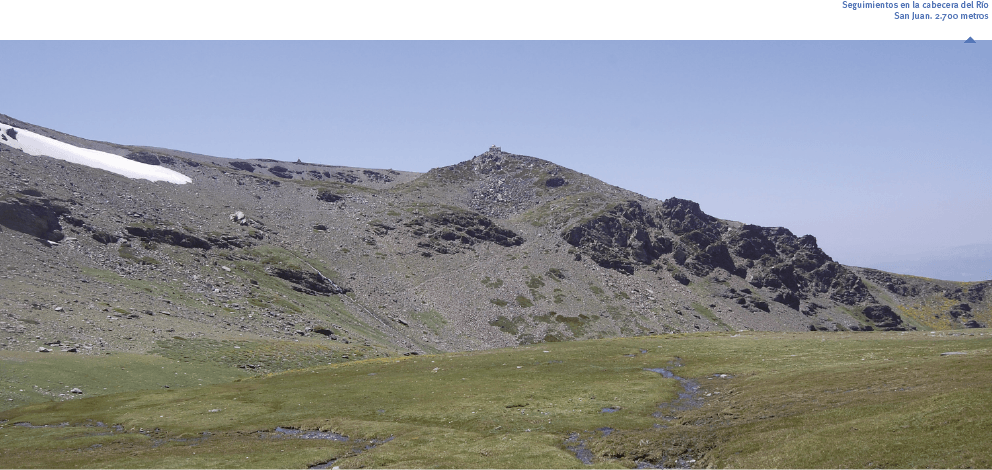Aims
High-mountain edaphohygrophilous communities known as borreguiles, are systems conditioned by the snow dynamics and potentially sensitive to temperature and precipitation changes. The systematic observation of their communities can contribute in a presumably shorter time span than other ecosystems to evidence and calibrate change phenomena related to global change. The importance and relative fragility of these ecosystems, added to the existence of prior data registered during the 1980s with a similar methodology, has led to the selection of this ecosystem as an indicator of the change processes.
The main objectives of the monitoring consist of: evaluating the changes in the composition and abundance of the taxa that make up the wet pastures of the high-mountain, recording phenological shifts, and relating all these changes to the climatic parameters available.

Method and effort
The monitoring developed in the borreguiles focuses on recording the changes in incidence and abundance of the taxa comprising these pastures. For the detection of alterations over a shorter term, the main phenological phases of its taxa are recorded.
The monitoring centres on the most widespread communities that inhabit this riparian setting, forming more or less wet grasslands. By means of fixed plots of 1 m2, the existing taxa are recorded and their abundance estimated as a percentage of coverage, as is the number of specimens of each main phenological phase (preflowering, flowering, fruiting).
A small number of taxa are counted by individuals once yearly (e.g. Pinguicula nevadensis). The phenological aspect is monitored every fortnight, while the abundance of taxa is estimated twice per monitoring cycle, between the months of May and October. Also, 43 plots are laid out between 2,200 and 2,700 m. These include fences to exclude livestock as reference information with respect to the effect of pasturing in the area.
Periodicity
This monitoring is annual.
References
Elzinga, A.L., Salzer, D.W. y Willoughby, J.W. 1998. Measuring and Monitoring Plant Populations. BLM Technical reference, no. 1730-1. Bureau of Land Management’s National Applied Resource Sciences Center. Denver, USA.
Lorite, J., Salazar, C. y Valle, F. 2003. Síntesis de la vegetación edafohigrófila del Parque Natural y Nacional de Sierra Nevada. Monogrf. Fl. y Veg. Béticas, 13: 47-110.
Losa Quintana, J.M., Molero Mesa, J., Casares, M. y Pérez Raya, F. 1986. El paisaje vegetal de Sierra Nevada: la cuenca alta del Río Genil. Serv. Publ. Univ. Granada. Granada. 285 pp..